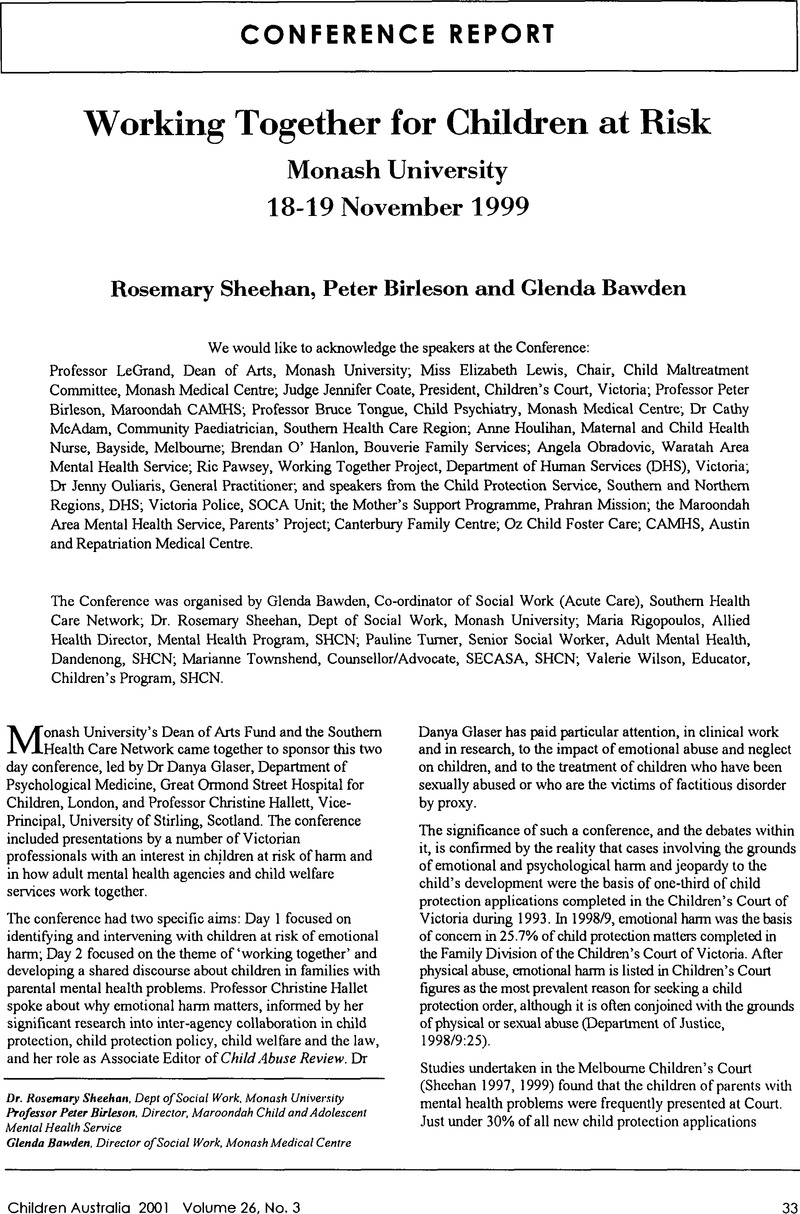Crossref Citations
This article has been cited by the following publications. This list is generated based on data provided by Crossref.
Sheehan *, Rosemary
and
Levine, Greg
2005.
Parents with Mental Illness: Decision‐making in Australian Children's Court Cases Involving Parents with Mental Health Problems.
Journal of Social Welfare and Family Law,
Vol. 27,
Issue. 1,
p.
17.
Sheehan, Rosemary
2005.
Partnership in Mental Health and Child Welfare.
Social Work in Health Care,
Vol. 39,
Issue. 3-4,
p.
309.





